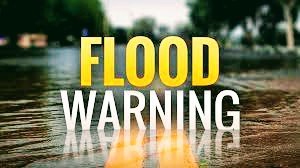2014 deluge again haunts Kashmiris as flood threat looms large over valley
Srinagar, August 27: On Thursday when river Jehlum swelled near the danger mark at several places, the government asked people to be vigilant in various parts of Kashmir.
Amid continuous rains, a lot of people from flood prone areas also ferried their families to safer areas as the water level in the Jhelum kept rising.
The rains have been going on since Wednesday and causing water logging in various parts of the Valley.
Executive Engineer Irrigation and Flood Control Sopore issued a circular on Thursday, which reads, “It is continuously raining from last 24 hours and there is every apprehension of heavy discharge in the adjacent Nallahs and tributaries as such all the sectoral officer/ beat officers are asked to remain vigilant and have an advance inspection of their jurisdiction especially vulnerable.”
Nadeem Ahmad, a resident of Rajbagh said they didn’t sleep the entire night due to heavy rainfall.
“We remained alert that the water level may go above the danger mark,” Ahmad told.
He said the rains reminded them the horrors they underwent when the floods hit their area in 2014.
Similar apprehensions were brewing among the residents of Shivpora, Batpora and Sonawar.
“Those moments of flood are still haunting us when we spent three nights on the terrace of our neighbouring house and the entire area was inundated in water. I always pray to God that we should not face such times again in our lives,” said Bilal Ahmad, a local resident of Sonawar.
He said the Jehlum water would enter into their area even before the danger level as the breached bunds have not been repaired yet.
The residents Mehjoor Nagar said the rain water has got stagnant in the lanes and bylanes of their area due to lack of drainage system.
“Water has not been drained out completely from our area. The rains since Wednesday have become a source of miseries for us due to lack of drainage system,” said Mohammad Amin, a resident of Mehjoor Nagar.
An official of the Irrigation and Flood Control department said they are monitoring the situation and have not issued flood threat yet.
“We have already deputed the staff on ground. They are continuously monitoring the water levels at different places,” the official told news agency.
Meanwhile, the gauge reading of the Jhelum River has been consistently rising since Wednesday.
A study titled ‘A satellite-based rapid assessment on floods in Jammu & Kashmir–September, 2014’ conducted jointly by the Department of Environment & Remote Sensing (DERS) and ISRO has warned that intensity of rainfall and frequency of rainy days in the Himalayan region may increase in 2030s, leading to another flood in Kashmir if immediate steps are not taken to restore the drainage system of Jhelum.
A senior official of the Irrigation and Flood Control department said the Wular Lake, which is the largest flood absorption basin has lost the water carrying capacity due to a host of factors.
“Several surveys have found that gross human interference, deforestation, encroachments, chocking of waterways and reduction in capacity of wet lands due to heavy siltation posing an imminent threat of floods even by average downpour,” the official said.
After 2014 deluge, tall claims were made by the government. But it seems as if the government did not have learned any lessons from 2014 devastating floods to handle disasters in Kashmir.
After the 2014 floods, the government has announced construction of an alternate flood channel to Jehlum in Kashmir. Despite passing over five years, the government has failed to frame a detailed project report (DPR) for the mega project.
In July 2015, the first-ever disaster management plan was approved by the cabinet headed by the then chief minister Mufti Mohammad Sayeed. However, officials said there has been no implementation of the disaster management plan. (KINS)
